
The Saunders-Roe SR.45 Princess was a British flying boat aircraft developed and built by Saunders-Roe at their Cowes facility on the Isle of Wight. It is the largest all-metal flying boat to have ever been constructed.

The Saunders Roe A.27 London was a British military biplane flying boat built by the Saunders Roe company. Only 31 were built, entering service with the Royal Air Force (RAF) in 1936. Although due for replacement by the outbreak of World War II, they saw some active service pending the introduction of the ultimately unsuccessful Lerwick.

The Saunders-Roe A.36 Lerwick was a British flying boat built by Saunders-Roe Limited (Saro). It was intended to be used with the Short Sunderland in Royal Air Force Coastal Command but it was a flawed design and only a small number were built. They had a poor service record and a high accident rate; of 21 aircraft, 10 were lost to accidents and one for an unknown reason.

The Saro A17 Cutty Sark was a British amphibious aircraft from the period between World War I and World War II, built by the British firm Saunders-Roe. The aircraft was named after the ship Cutty Sark, rather than the garment or the fictional witch.

The Yokosuka H5Y or Yokosuka Navy Type 99 Flying Boat Model 11, given the allied code name Cherry, was an IJNAS flying boat in service from 1938.
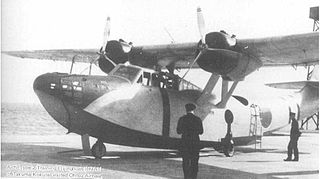
The Aichi H9A was an Imperial Japanese Navy Air Service flying boat used during the first years of World War II for crew training. An uncommon type, it was not encountered by Allied forces until spring 1945, and was never assigned an Allied reporting name.
The Short Shetland was intended as a British long-range, four-engined flying boat built by Short Brothers at Rochester, Kent for use in the Second World War. It was designed to meet an Air Ministry requirement for a very-long range reconnaissance flying boat. The design used the company's experience with large scale production of the Short Sunderland. Two prototypes flew, but the end of World War II prevented the Shetland from entering production. It was the first aircraft designed with a 110 volt electrical system.
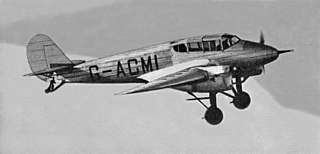
The Blackburn B-1 Segrave was a 1930s British twin-engine four-seat touring aircraft built by Blackburn Aircraft.
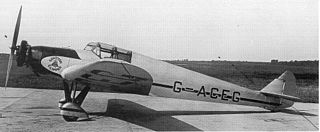
The Spartan Clipper was a British light touring aeroplane of the 1930s. It was a single-engine, two-seat, low-wing monoplane with a fixed tailwheel undercarriage.
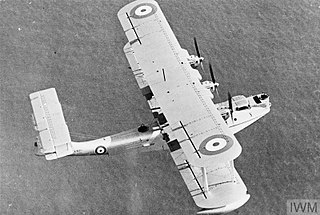
The Blackburn Perth was a British flying boat which was in service during the interwar period. It was essentially an upgraded Iris, and hence the largest flying-boat to serve with the Royal Air Force at the time.

The Saro A.21 Windhover was a British amphibious aircraft from the period between World War I and World War II, constructed by Saunders-Roe, or Saro. It was originally advertised as the A.19 Thermopylae after the famous clipper ship, being an enlarged version of the Saro Cutty Sark.

The Saro Cloud was a British passenger amphibian flying boat designed and built by Saunders-Roe as the A.19. It was later produced as the A.29 for the Royal Air Force for pilot and navigator training.
The Saunders-Roe Duchess also known as the model P.131 was a British design for a large jet-powered flying boat envisaged by Saunders-Roe, based in Cowes on the Isle of Wight.
The Saro A.33 was a British prototype flying boat built by Saunders-Roe Limited in response to a British Air Ministry Specification R.2/33 and in competition with the Short Sunderland.
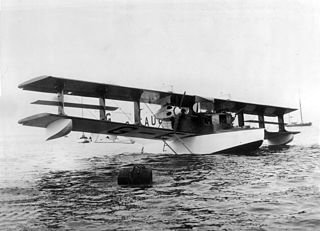
The Saunders Kittiwake was a British amphibian flying-boat built by S. E. Saunders at East Cowes, Isle of Wight. Only one was built, and it was scrapped after less than a year of testing.
The Saunders T.1 was the first aircraft built by the Saunders Company, a two-seat single-engined biplane with unusual monocoque fuselage construction. Only one was built.

The Saunders A.14 was a test aircraft for Saunders' new metal hull construction method, being a Supermarine Southampton fitted with the Saunders' fuselage. The methods tested worked well enough to be used in SARO flying boat production from 1928 to 1938.
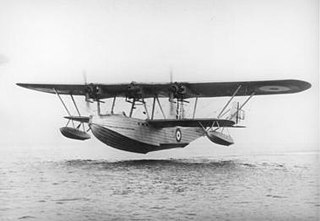
The Saunders Severn was a three-engined biplane flying boat intended for maritime patrol duties. It performed well but was fragile and unreliable. Only one was built.
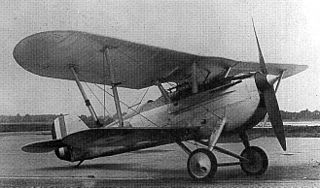
The Saunders A.10 was a private venture four-gun fighter. It was a single-seat, single-engined biplane with poor handling, later serving as a gun-testing aircraft.

The Hiro H2H, or "Navy Type 89 Flying boat", was a Japanese patrol flying boat of the 1930s. Designed and built by the Hiro Naval Arsenal, it was a twin-engined biplane that was operated by the Imperial Japanese Navy.
















